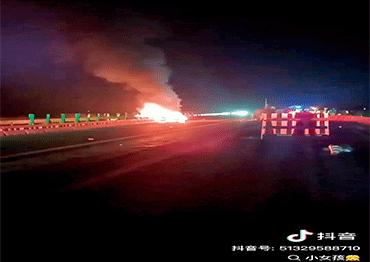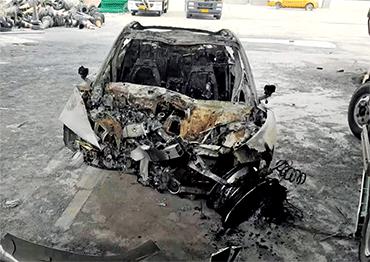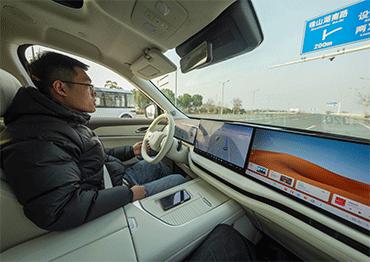The SU7 crash was a wake-up call for China’s intelligent driving craze. As automakers rush to roll out so-called L2+ systems, it has become increasingly clear that many have yet to strike the necessary balance between offering convenience and ensuring drivers remain alert behind the wheel.
In a March report, China Automotive News cited Wang Fang, director of the reporting department at the China Consumers Association, as saying that 73 percent of complaints related to auto driving involve distracted driving caused by over-reliance on intelligent systems.
“When drivers start treating the seat like a sofa, it’s a misunderstanding more dangerous than any algorithmic flaw,” she said.
While DMS (driver monitoring systems) are capable of tracking driver alertness through facial cues, privacy concerns have made many drivers resistant to such monitoring. At the same time, carmakers are hesitant to promote or enhance these systems for fear of undermining user confidence in their technologies.
Experts argue that timely and effective “handover” from machine to human is essential for L2+ systems.
According to Zhu Xichan, a professor at the College of Automotive Studies at Tongji University in Shanghai, there is an average of just 1.7 seconds between a system warning and an actual accident, far too short for drivers to react. Human response time under normal conditions typically requires at least 2.3 seconds, and the delay is even longer if drivers are not fully engaged while the system is active.
So far, Chinese regulators have not issued clear requirements for when or how L2+ systems should return control to human drivers.
International standards for L3 systems recommend giving drivers at least 10 seconds to respond once a warning is issued, but no mandatory “time to collision” (TTC) thresholds have been set for L2+ systems.
“The hardware in most current vehicles simply can’t meet that standard,” said the anonymous industry insider. “At 120 kilometers per hour, a 10-second TTC would require a sensor range of 300 meters. But few existing vehicles are equipped with laser radars that can detect that far. If a system can offer even five seconds, that should be part of a mandatory standard.”
Sun Hui agrees, attributing the regulatory gap to the ambiguous definition of L2+ systems, especially given the wide range of capabilities between carmakers.
“We’re participating in a long-term test by the China Automotive Engineering Research Institute,” said the anonymous academic. “We’ve grouped cars with high-speed NOA into six price categories and are evaluating their performance feature by feature. Our goal is to help fill the void in national standards and lay the foundation for more effective oversight. If a vehicle underperforms, stricter intervention may be necessary.”
On February 28, the Ministry of Industry and Information Technology (MIIT) and the State Administration for Market Regulation released a document on further strengthening the management of intelligent connected vehicles’ market entry, recall and software upgrading.
For the first time, the guidance outlines baseline requirements for operating intelligent systems. Automakers must now test vehicles in varied road, infrastructure and weather conditions and must trigger human handover – through sound, lights or speed reduction – when a situation exceeds system capabilities.
The document also cracks down on misleading and exaggerated advertising.
The move is seen as a positive step toward the healthy development of the intelligent vehicle sector, especially as companies set their sights on L3 systems and beyond.
At the China EV100 Forum 2025, held in March in Beijing, an MIIT official revealed plans to conditionally approve L3 vehicles for production and market entry.
Also at the forum, Wan Gang, chairman of the China Association for Science and Technology, called for the establishment of dedicated safety legislation and market-entry testing standards tailored to high-level intelligent vehicles.
He emphasized that L3 represents a turning point not only for technical innovation, but also for user expectations and responsibility frameworks. Although current laws hold drivers at fault for car accidents involving intelligent driving systems rated L2 or lower, the new document proposes further clarification based on accident details.
Beijing’s new Regulation on Autonomous Vehicles, which came into effect on April 1, is viewed as a milestone for the industry’s healthy development. It is the first regulation in China to support autonomous functions in privately owned vehicles, and experts say it could accelerate national-level policymaking around intelligent driving.
“I don’t believe interest in intelligent driving will fade because of these safety debates,” said Zhu Xichan with Tongji University. “But I do believe the industry’s narrative will shift, from emphasizing intelligence to emphasizing safety.”

 Old Version
Old Version



